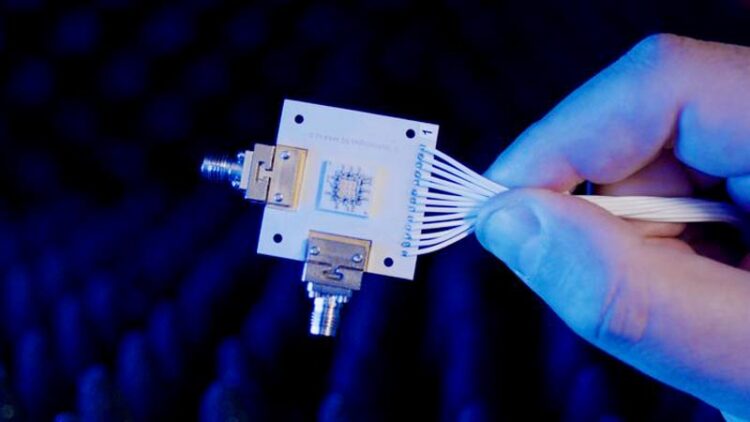Smart antenna will revolutionize telecommunications industry

Massachusetts based Verana Networks, licensee of Cetiner’s patented antenna, announced plans earlier this year that Verizon will trial its 5G base station equipped with the antenna module in large metro areas.
Credit: Matthew Jensen/Utah State University
A new antenna technology developed at Utah State University will soon be tested by a national wireless provider for a pilot study that could revolutionize the telecommunications industry.
Bedri Cetiner, a professor of electrical engineering, patented a new antenna called a multifunctional reconfigurable antenna that can adapt to locate a signal’s direction and frequency.
For more than a century, conventional antenna equipment was only capable of broadcasting and receiving signals in all directions. Cetiner’s design is more efficient because it sends and receives signals in a particular direction, shape and frequency, which saves energy and better utilizes the electromagnetic spectrum. Improved antenna designs are critical to keep up with the increasing demands users expect from their mobile devices.
“Moving from 4G to 5G is not simply a matter of retrofitting existing technology,” said Cetiner. “5G is an entirely new paradigm.”
Massachusetts based Verana Networks, licensee of Cetiner’s patented antenna, announced plans earlier this year that Verizon will trial its 5G base station equipped with the antenna module in large metro areas.
“5G allows for higher frequency and more bandwidth, which translates to more data and more users on a network,” said Cetiner. “We are no longer in the Marconi era, but one of directive and steerable communication.”
In 2014, Cetiner launched i5 Technologies, a USU spinoff company focused on innovative telecommunications equipment. The licensing deal is a major success for Cetiner and his company which employs three of his former students.
“At i5 we specialize in innovation, and we are always learning,” he added. “Innovation allows me as a teacher to educate my students with the skills they need to work as the next generation of engineers. My research gives me the chance to bring my experience into the classroom. It’s all connected.”
Cetiner says his antenna technology helps reduce delay in sending and receiving data and creates new opportunities with applications in education, medicine and more.
“Imagine a surgeon using a robot to perform surgery miles away; or teaching a classroom of students across the globe,” he said. “You don’t want delays when you’re doing that kind of work. With improved antenna design and higher data transfer rates, we can do things we never thought possible before.”
All latest news from the category: Information Technology
Here you can find a summary of innovations in the fields of information and data processing and up-to-date developments on IT equipment and hardware.
This area covers topics such as IT services, IT architectures, IT management and telecommunications.
Newest articles
Faster, more energy-efficient way to manufacture an industrially important chemical
Zirconium combined with silicon nitride enhances the conversion of propane — present in natural gas — needed to create in-demand plastic, polypropylene. Polypropylene is a common type of plastic found…

Energy planning in Ghana as a role model for the world
Improving the resilience of energy systems in the Global South. What criteria should we use to better plan for resilient energy systems? How do socio-economic, technical and climate change related…

Artificial blood vessels could improve heart bypass outcomes
Artificial blood vessels could improve heart bypass outcomes. 3D-printed blood vessels, which closely mimic the properties of human veins, could transform the treatment of cardiovascular diseases. Strong, flexible, gel-like tubes…





















